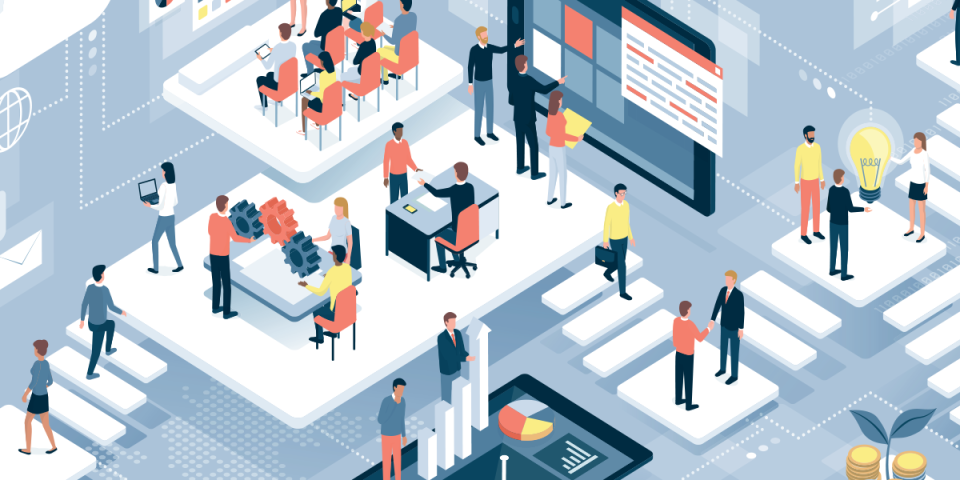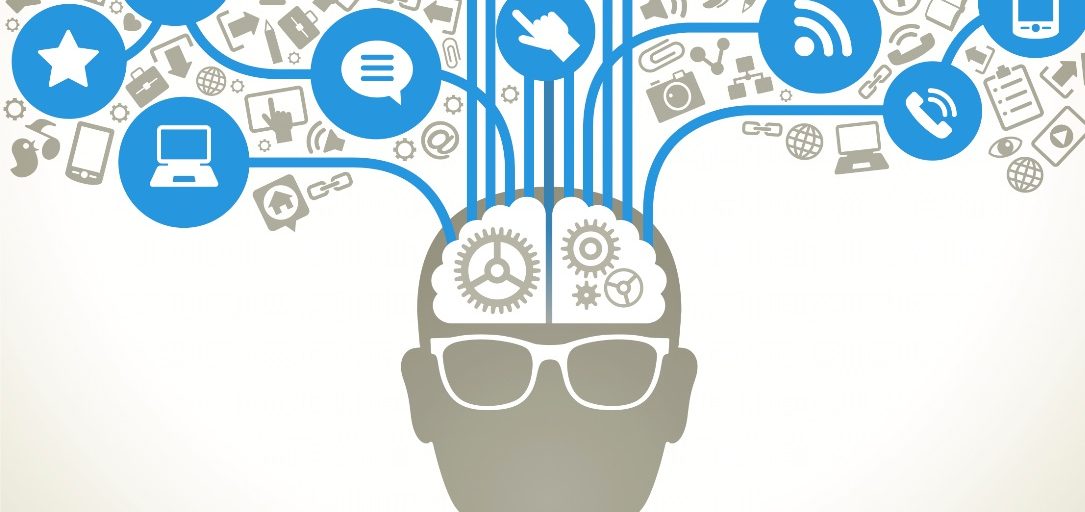
We have all experienced the frustration of learning something new but being unable to remember it when we need it. Memory is clearly a key ingredient in learning, since it is our ability to remember that allows us to apply new learning. The crucial role of memory is even more important today as we confront a world that is changing so rapidly that knowledge can become obsolete in just a few years, requiring us to remember an increasing body of knowledge in constant flux.
In this two-part blog, I will first address how memory, recall and recognition work. In Part II, I’ll share proven techniques that help people develop a better memory.
How Memory Works
Before we delve into memory improvement, we need to understand how memories are made in the first place. We tend to think our memory works like a filing cabinet. We experience an event, generate a memory and then file it away for later use. However, according to medical research, the basic mechanisms behind memory are much more dynamic. In fact, making memories is similar to logging your laptop into a WiFi network — the strength of the network signal determines how well the event is translated and remembered.
Neurons (nerve cells in the brain) communicate through synaptic connections (structures that pass a signal from neuron-to-neuron) that “talk” to each other when certain neurotransmitters (chemicals that allow the transmission of these signals) are present. Think of a neurotransmitter as an email. If you’re busy and you receive one or two emails from people you don’t know, you might ignore them. But, if you are bombarded with hundreds of emails from a person you know, saying basically the same thing, you will likely begin to pay attention and start a conversation with the sender about the subject of all those emails.
Similarly, neurons only open a line of communication with each other when they receive stimulation from several of the same neurotransmitters at once. The brain pays attention to multiple transmissions from the same signal, while ignoring isolated transmissions that don’t form a pattern. So, how does this relate to memory? It’s the strength of these connections between neurons that determines how a memory is formed.
According to William Griffith, Ph.D., a cellular neuroscientist and chair of the Department of Neuroscience and Experimental Therapeutics at the Texas A&M Health Science Center College of Medicine, “The persistent strengthening of these activated synapses (connections) between neurons is called long-term potentiation (LTP). LTP is the most recognized cellular mechanism to explain memory because it can alter the strength between brain cell connections. If this strength is maintained, a memory can be formed.”
“The brain is a plastic organ,” Griffith went on to explain. “This means it can easily reconfigure or modify itself. However, it’s also a muscle. You use it or you lose it. As the synapses and pathways between neurons are used, they gain the ability to become strengthened and permanently enhanced. This is the building block of how memory works.”
Our Brain’s Memory Centers
Thinking about memory as occurring in a single part of the brain is mistaken. Indeed, our brains have multiple memory centers, each with its own specialized functions. The simplified model below shows three memory types, though the physiology of memory as described above is a far more complex reality.
Our sensory memory receives input from the environment through our five core senses (each with its own processing center in our brains). This sensory information is transferred to our short-term working memory, where it is processed and meaning assigned. If not forgotten, this memory is passed to our long-term memory through rehearsal and encoding, where it joins the repository where all our life experiences and knowledge is stored.

Based on Memory Model by Richard Atkinson and Richard Shiffrin
Our ability to recall and relive certain memories depends on maintaining the strength of connections between the long-term and short-term memory centers. LTP acts as a superfast wireless network of sorts — allowing your brain to upload, download and process at a higher rate. This explains why some memories are more vivid than others: the pathway on which you recreate them performs at a faster pace. Conversely, when LTP weakens, the synaptic connections between neurons decline, which could explain cognitive loss and impairment as we age. Just as muscles in the body atrophy with age when we don’t use them, the brain will deteriorate over time when it’s not stimulated.
How Recall Works
Recall or retrieval of memory refers to the subsequent re-accessing of events and information from the past, which have been previously encoded and stored in the brain. In common parlance, we think of it as remembering. During recall, the brain “replays” a pattern of neural activity that was originally generated in response to a particular event, echoing the brain‘s perception of the real event.
These replays are not quite identical to the original, though – otherwise we would not know the difference between the genuine experience and the memory. Instead, our memories are mixed with an awareness of the current situation and time. Thus, memories are not frozen in time; new information and interpretation may become incorporated into old memories over time. Thus, remembering can be thought of as an act of creative reimagination. Recall involves remembering a fact, event or object that is not currently physically present (in the sense of retrieving a representation, mental image or fact), and requires the direct uncovering of information from memory, such as remembering the name of a recognized person or the time of an event in the past.
Because of the way memories are encoded and stored, memory recall is effectively an on-the-fly reconstruction of elements scattered throughout various areas of our brains. Memories are not stored in our brains like books on library shelves, or even as a collection of self-contained recordings or pictures or video clips, but may be better thought of as a kind of collage or a jigsaw puzzle, involving different elements stored in disparate parts of the brain linked together by associations and neural networks. Memory retrieval therefore requires re-visiting the neural pathways the brain formed when encoding the memory, and the strength of those pathways determines how quickly the memory can be recalled. Recall effectively returns a memory from long-term storage to short-term, working memory, where it can be accessed, in a kind of mirror image of the encoding process. It is then re-stored back in long-term memory, thus re-consolidating and strengthening it. This is why story-telling is such a powerful memory aid. The more the story is repeated, the more its content is encoded in its listeners.
The strength of our recall ability is determined primarily by two factors: recency and frequency. The more recent the event, the more easily we can recall it. Thus, you probably remember what you ate for breakfast this morning, but not what you had three years ago today. The other key factor is frequency – how often we access and recall a memory. The more frequently we use a memorized item, the more likely we can retrieve it quickly. Thus, we know our own street address if we have lived there for a while due to the frequent use of that information, but we can’t remember the street address of a new place we are visiting for the first time without recording it somewhere.
How Recognition Works
Though we normally think of memory as recall, a second method for accessing memory is recognition. Recognition is the association of an event or physical object with one previously experienced or encountered, and involves a process of comparison of information with memory, e.g. recognizing a known face or answering multiple choice questions on an exam. Recognition is a largely unconscious process and is more accurate than recall, in that it requires just a single process rather than two. Recognition requires only a simple familiarity decision, whereas a full recall of an item from memory requires a two-stage process, in which the search and retrieval of candidate items from memory is followed by a familiarity decision where the correct information is chosen from the candidates retrieved. Thus, recall involves actively reconstructing the information, requiring the activation of all the neurons involved in creating the original memory, whereas recognition only requires a relatively simple decision as to whether one thing among others has been encountered before. A common example is being able to recognize a vocabulary word, but not being able to recall how to spell it. Spelling requires us to recreate a word from its individual letters.
Sometimes, however, even if a part of an object initially activates the neural network concerned, recognition may then suffice to activate the entire network. Thus, when we recognize a familiar face as she walks by, the recognition of the person’s identity may trigger additional memories, such as her name and the last time we encountered her.
The evidence suggests that memory retrieval is a more or less automatic process, something are brains are naturally wired to perform on demand. However, the efficiency of memory recall can be increased to some extent by making inferences from our personal stockpile of world knowledge, and by our use of schema, organized mental structures or frameworks of pre-conceived ideas about the world and how it works, which we can use to make realistic inferences and assumptions about how to interpret and process information. Thus, our everyday communication consists not just of words and their meanings, but also of what is left out and mutually understood. For instance, if someone says meet me “at 3 o’clock”, our knowledge of the world usually allows us to know automatically whether it is 3 am or 3 pm. Such schemata are also applied to recalled memories, so that we can often flesh out details of a memory from just a skeleton memory of a central event or object. However, the use of schemata may also lead to memory errors as we add assumed or expected associated events that did not actually occur. This is often seen in crime witness accounts where witnesses will remember different aspects of the crime and add details that did not actually occur.
Memory also benefits from techniques that use simplification and association to increase the likelihood that we will remember when we need to. You will learn about these techniques, such as mnemonics and memory palaces, in the second part of this blog on Learning to Learn: Memory.

